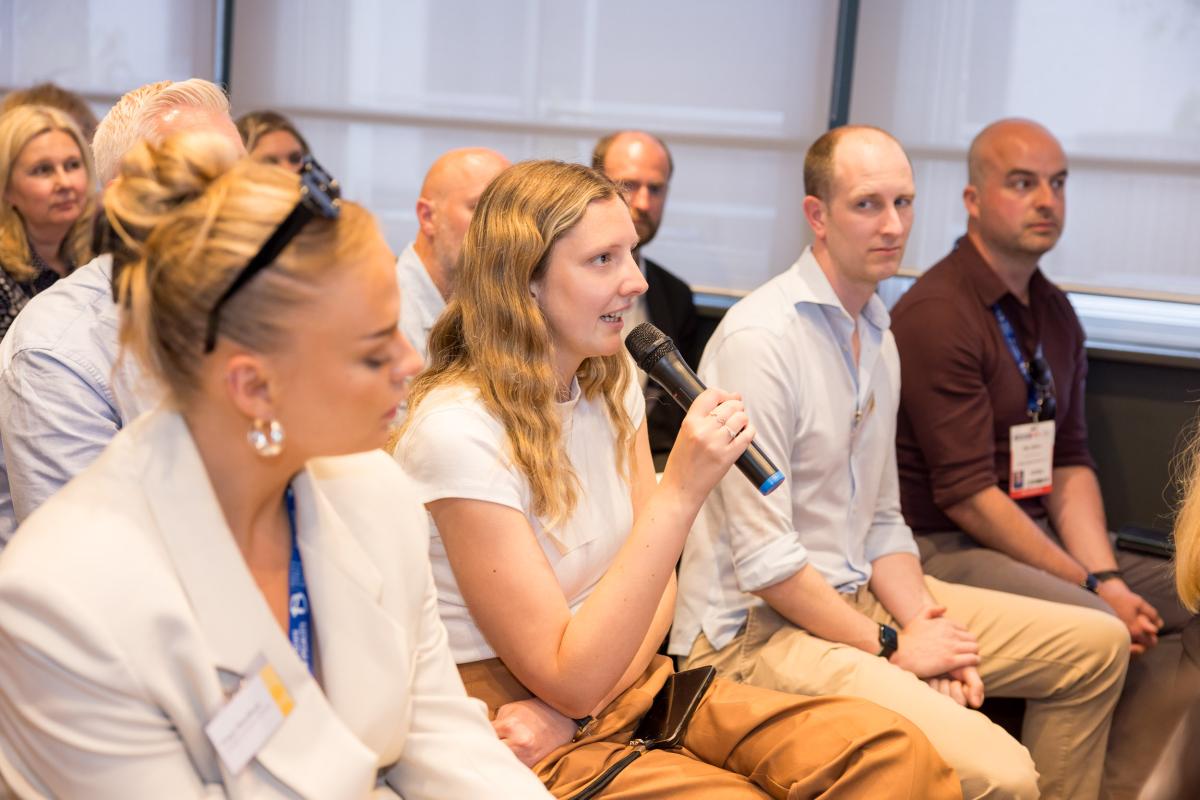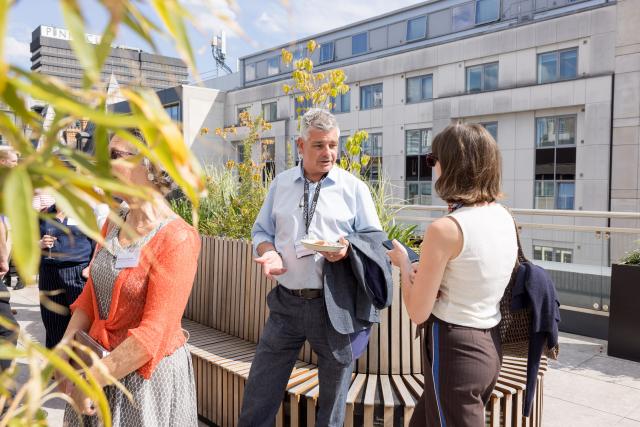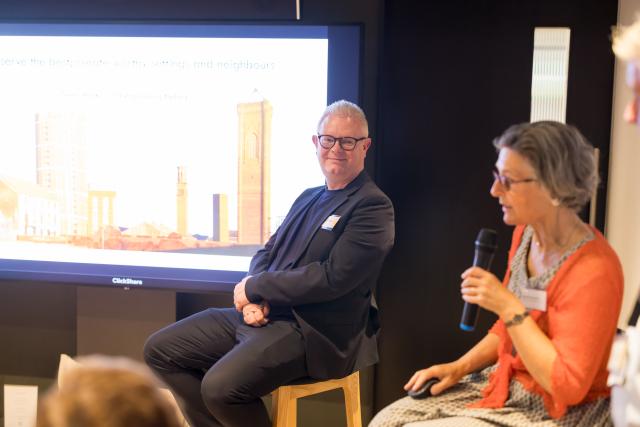

Heritage is such an integral part of what we do as a practice and is woven into all of our work, whether that is on residential projects or listed buildings.
As part of our commitment to heritage, we hosted our first UKREiiF fringe event in May, bringing together leading voices in the sector to explore: “What does the heritage of the future look like?”
A huge thank you to our panellists, including Catherine Dewar from Historic England, Liam Riley from Leeds City Council, Martin Kirkpatrick from Buttress, and Rachael Unsworth from Leeds City Walking Tours - and to our host, Chithra Marsh, Buttress director.

Heritage is about more than preserving bricks and mortar. It’s about recognising the story of places and contributing positively to their cultural, social and historical legacy. It is about people, keeping communities connected to their history and ensuring that conservation contributes to sustainable efforts.
It’s important to be constantly learning and improving from others in the industry, and the panel discussion allowed us to listen to others and reflect on our knowledge.



Read the insights of our panellists below.
Catherine Dewar, Historic England
Catherine Dewar emphasised the enduring value of the reuse and refurbishment of existing buildings. “Refurbished buildings will be loved for longer and will also generate growth,” she explained, highlighting that the conservation and adaptation of heritage assets can contribute to both cultural sustainability and economic vitality. Catherine also spoke about the importance of representation within heritage, noting, “Our National Heritage List for England will reflect the communities it serves.” This underlines a shift towards a more inclusive understanding of heritage that recognises the importance of diverse history and identity. Finally, heritage and construction skills featured in Catherine’s pitch in explaining that the construction industry needs many more skilled tradespeople if we are to effectively adapt to a changing climate.
Martin Kirkpatrick, Buttress
Martin Kirkpatrick offered a perspective on how heritage resonates emotionally with people. “Heritage… becomes quite an emotional thing… and goes beyond just architecture and buildings.” Heritage is deeply connected to personal identity and memory. Alongside emotion, the future of heritage relies on good design, including accessibility as a key factor in making it more relevant and inclusive: “Accessibility helps take heritage into the future, takes it into something that is more relevant now.” Heritage needs to be culturally and physically accessible for all.
Liam Riley, Leeds City Council
For Liam Riley, the key to safeguarding heritage lies in giving it a meanwhile purpose. “Ultimately, in terms of future-proofing, it’s bringing them back into meaningful reuse.” He reinforces the idea that historic buildings must not only be protected but must be actively reimagined as functional spaces that continue to serve communities.
Rachael Unsworth, Leeds City Walking Tours
Rachael Unsworth brought a pragmatic angle to the question. She commented: “Much as I appreciate historic elements of the built environment, we can’t preserve everything just because it’s old. Cities are always evolving and some structures reach the end of their viable life, even if they are historically interesting or just familiar old friends". She argued that where adaptation happens, not every feature needs to be constantly displayed or used. Some elements can be carefully hidden behind new fittings to be rediscovered by future generations. Digital records and displays can enhance understanding of obscured or inaccessible elements.
In a setting that includes listed buildings and other unique features, maximum respect for historic elements should be encouraged. This doesn’t need to mean bland pastiche; great creativity can result from constraints and yield pleasing juxtapositions instead of jarring or overwhelming new neighbours.
Rachael added: "It was stimulating to hear the thoughtful contributions from the other panellists, each with their particular experience and enthusiasms. The crowded room was heartening testimony to the interest in this topic amongst built environment professionals".
Jenny Wilkinson, Buttress
Buttress architect Jenny Wilkinson organised our UKREiiF activities for this year, planning our presence across the conference as well as our very first panel event.
"UK REiiF 2025 was a fantastic opportunity for us at Buttress to showcase our expertise while reconnecting with familiar faces and forming new connections across a packed schedule of events and exhibitions.
Our fringe event was a standout success, thanks to the great company, lively discussions, and yes, the sunshine and tasty food also helped! The panel discussion sparked meaningful conversations about the heritage of the future and explored how the value we assign to assets today might shift when viewed through the lens of future generations. With their unique and varied perspectives, our panellists sparked a dynamic and thought-provoking dialogue that carried on well into the afternoon.
We were equally proud to support Historic England's launch of the Heritage Investor Prospectus. It was an honour to share our experiences working with historic buildings and to help dispel some common myths about investing in heritage.
With key themes of housing, heritage, sustainability, and community, the conference touched on every corner of our work and experience. Over the three days, we gained valuable insights, built new relationships, and left with a renewed sense of optimism and confidence in our industry’s potential. Leeds treated us to sunny skies and an inspiring atmosphere, and we can’t wait to return next year to build on this year’s success."

Stephen Anderson, Historic England panel
At UKREiiF, Buttress director Stephen Anderson contributed to a key panel session hosted by Historic England at UKREiiF. The panel covered the successful launch of Historic England’s Heritage Investment Prospectus, announced at the pavilion.
The prospectus showcases historic sites and buildings across England where owners are actively looking for investment partners or buyers. Investing in heritage is a great opportunity to help revitalise areas and buildings at risk of being lost.
The panel explored how heritage-led regeneration can drive economic growth and social value and how best to convince investors that heritage regeneration makes business sense.
Stephen Anderson said: “The main myth is that heritage is the barrier, whereas it is actually access, or ground conditions, or cables…we misdiagnose every time and it is frustrating when we do. Heritage assets are a product that is distinct and have economic and social value. When we are visionary about it, we can unlock that value.”
Photography credits
@paulcraigphoto